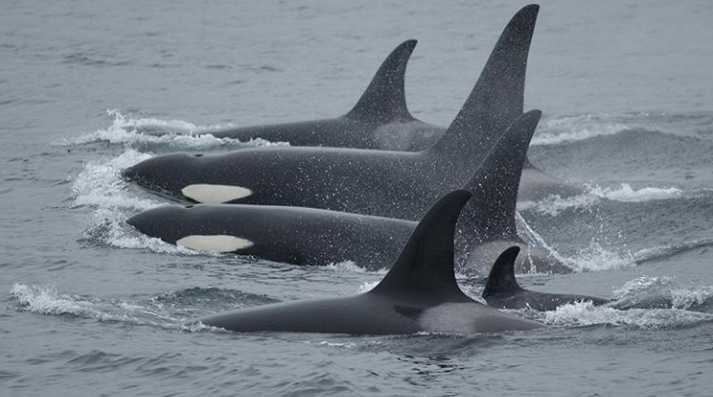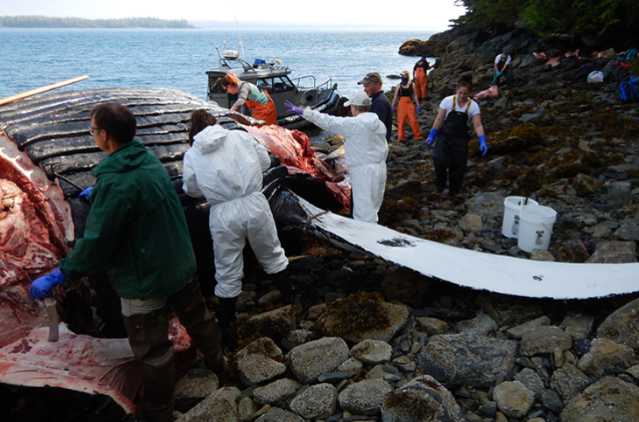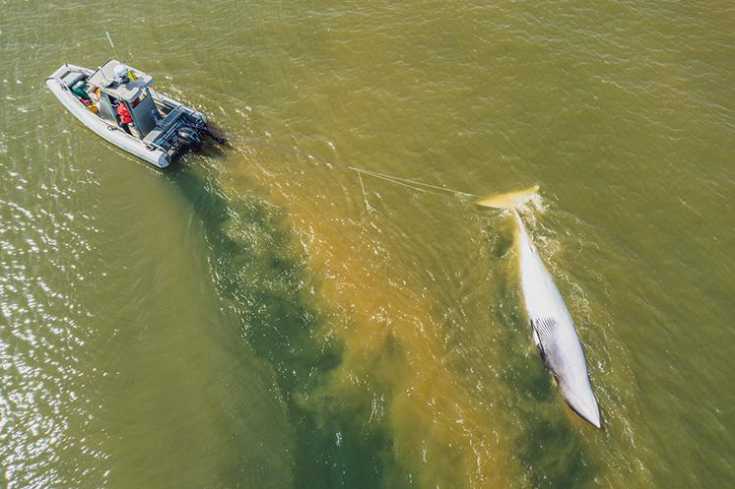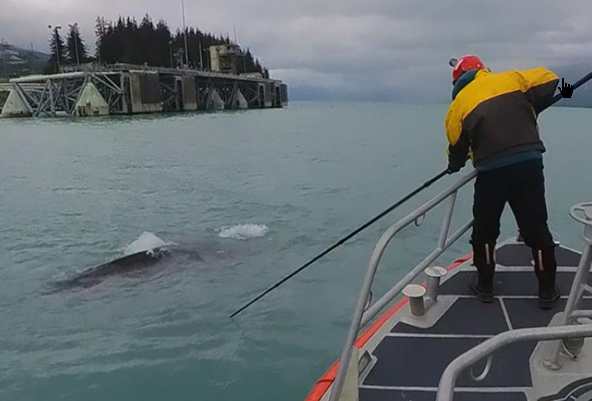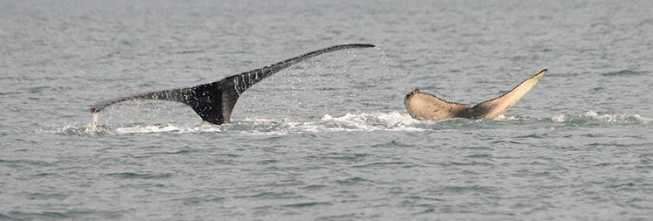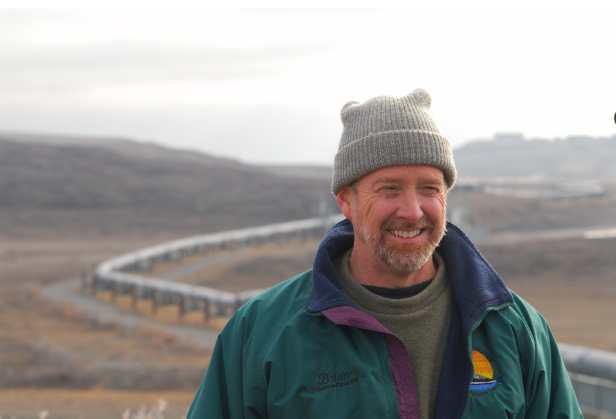
Coffman Cove is a small, tightly-knit community on Prince of Wales Island in Southeast Alaska. Many people both work and recreate on the waters in the area. In mid-August, two killer whales were observed in Barnes Lake. The unexpected sight was said to first appear as if jet skis were moving across the lake.
Community members reported the whales to NOAA’s Alaska 24-hour stranding hotline in late August. The lake has two natural channels to the ocean, and has significant tidal exchange with the ocean. Marine mammal experts hoped the whales would leave the lake on their own during the early September high tide cycle, but they did not. The lower high tides in early September and the large kelp bed in the north entrance of the lake may have been a barrier to their exit. It took a large team, and a lot of coordination, to finally coax the whales out of the lake.
This is not the first time killer whales have gotten trapped in Barnes Lake. In 1994, a group of offshore killer whales (an ecotype that feeds on sharks and other fish) was observed in this lake. Most were successfully herded back into the ocean with a boat-based intervention using oikomi pipes—hollow metal pipes people on boats hammer to create a loud noise. An effort using oikomi pipes requires multiple boats working in close coordination. David Bain with Orca Conservancy, who led the 1994 rescue, was onsite to participate in the recent response.
Using photos collected by Coffman Cove community members, Jared Towers with Fisheries and Oceans Canada and Bay Cetology identified the two killer whales as Bigg’s killer whales. Bigg’s killer whales eat marine mammals. Experts were concerned the whales likely had limited food resources while in the lake, meaning any intervention needed to happen quickly.
The large male is T051, a 42-year-old male who has been seen in British Columbia and Alaska. T049A2 is a 16-year-old male well known from the same waters. Prior to their appearance in Barnes Lake, T051 and T049A2 were last reported together off the west coast of Vancouver Island on July 9.
Planning a Response
NOAA Fisheries Alaska Region began coordinating a complex response to guide the two killer whales out of the lake and back to the ocean. The best opportunity for this operation was during the high tides between September 28 and October 2, when the channels into the lake were the deepest.
Team members from outside of Coffman Cove arrived on Prince of Wales Island September 24 and 25. The response team included two biologists with previous experience in killer whale entrapments, a graduate student studying Bigg’s killer whales, and NOAA’s Alaska Regional Stranding Coordinator.
They spent the first few days gathering or building the gear needed for the response.
On September 27, they collected images using a drone that showed both whales were in good body condition. The team also held a community meeting in Coffman Cove on Wednesday evening to explain the response plan and organize volunteers.
The team had three primary tactics to encourage the whales to depart the lake:
- Playbacks, or acoustic recordings, of whales known to travel with the Barnes Lake whales
- Hukilau, an ancient Hawaiian fishing method using lines and floats
- Oikomi pipes
The plan included the possibility of combining two or all three of the tactics.
Mandy Keogh, NOAA’s Alaska Regional Stranding Coordinator noted, “Barnes Lake was a really challenging area to mount a response. The tides dictated which day and how long we could work to encourage the whales out of the lake. Human safety is always the top priority in any stranding response and the local knowledge, boating skills, and dedication of the Coffman Cove community is what made this response possible.”
[content id=”79272″]
Pages: 1 2


